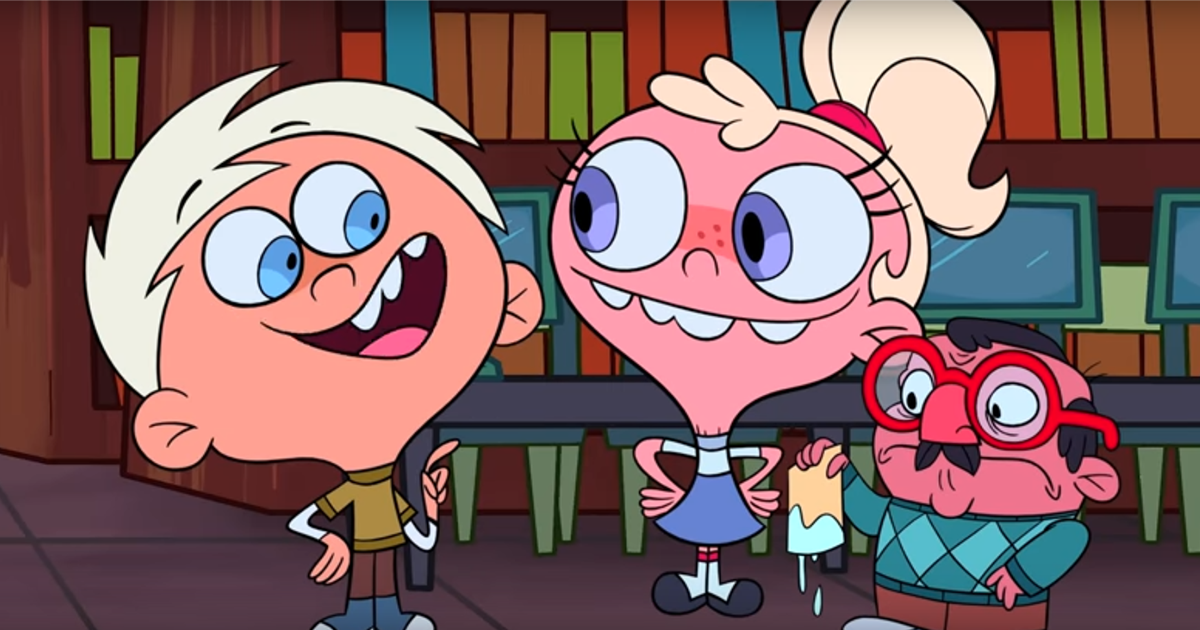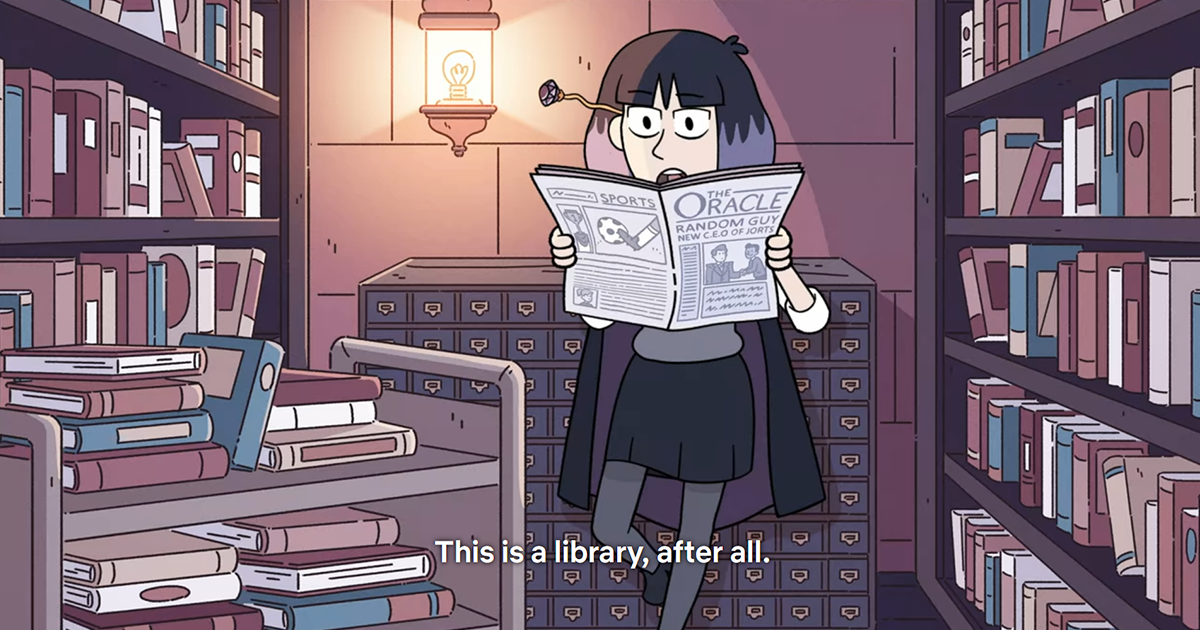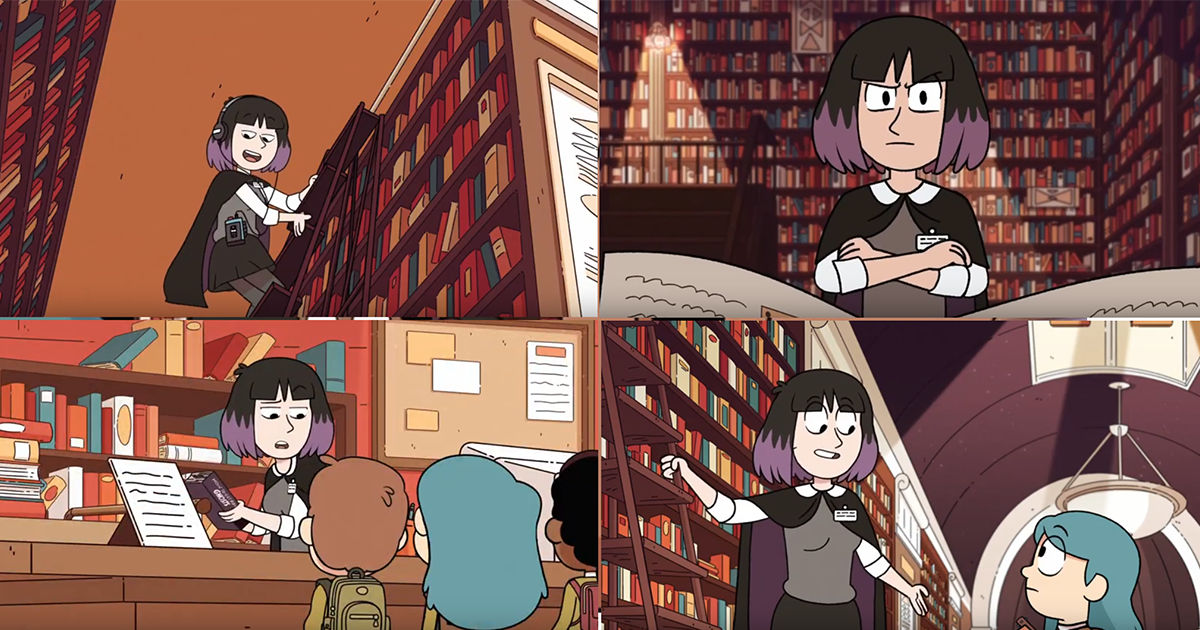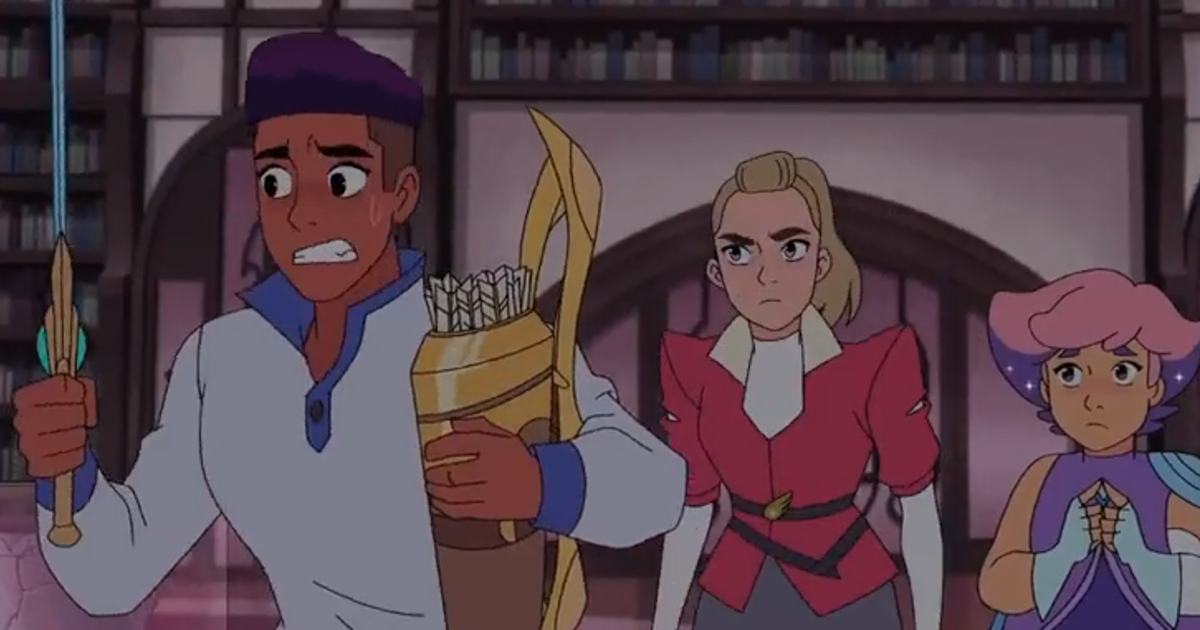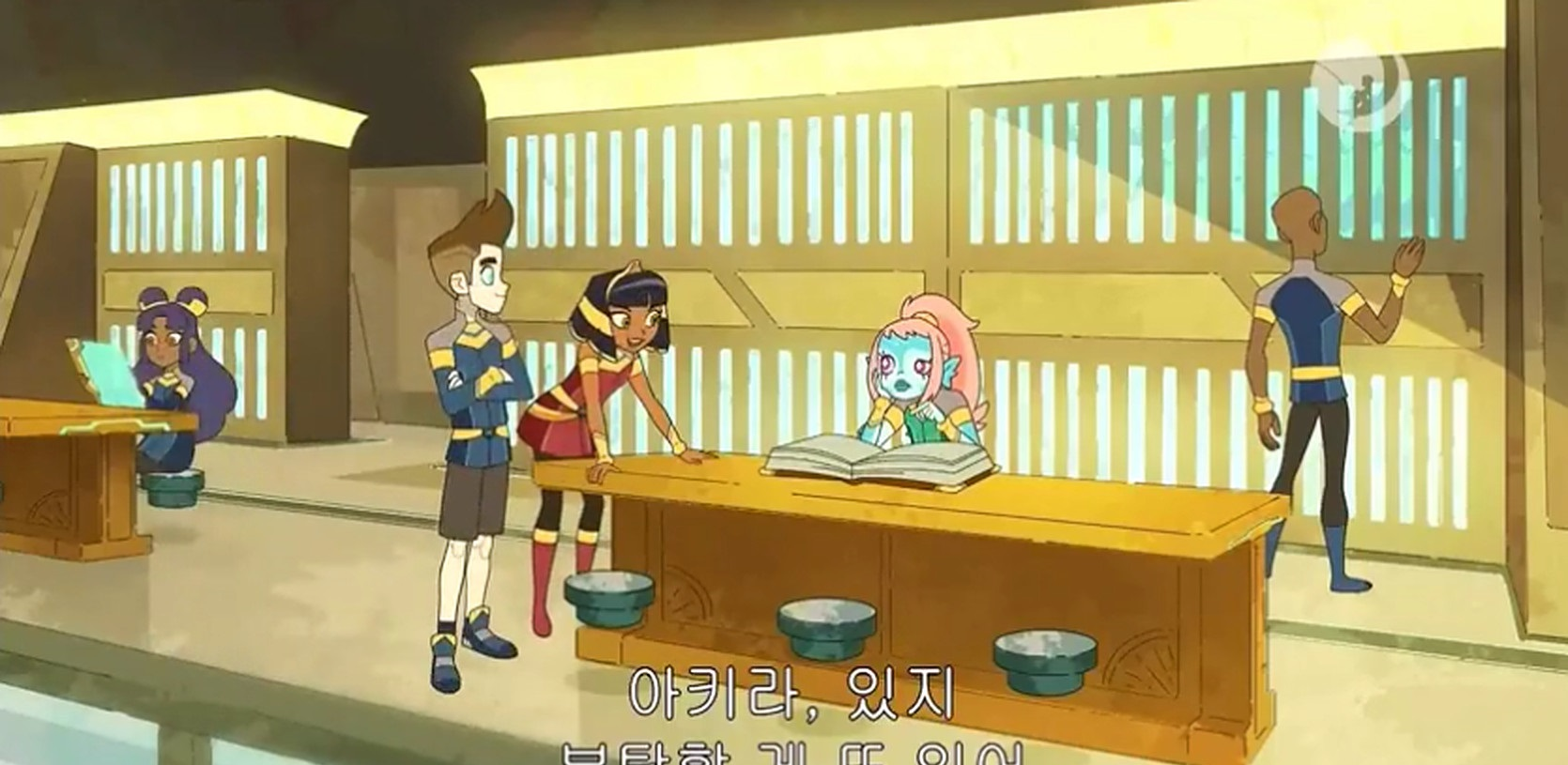This Nickelodeon Show Features a Magical Secret Library
by Burkely Hermann
What if I told you that there was an all-ages animated series where a special and magnificent library was so central, it even surprised the series creator? There is such a show-Nickelodeon’s Welcome to the Wayne, created by Billy Lopez. It features a library that exemplifies the series’ quirkiness.
The role of the library in the show goes beyond positive depictions of libraries and librarians in recent years in animated series such as Too Loud, Mira, Royal Detective, She-Ra and the Princesses of Power, Hilda, and Cleopatra in Space. In Welcome to the Wayne, the chief librarian of a magical library, called the Stanza, is a Black woman named Clara Rhone-one of very few librarians of color in popular culture). She is voiced by Harriett D. Foy. In the first season, the library and its non-human employees are central to the series, a theme continued in the second season, emphasizing the value of libraries as places of knowledge, and understanding.
In the show’s first episode, one of the three protagonists, Saraline, is unable to find the secret library in her apartment complex, the Wayne. Her friend and new apartment resident, Ansi Molina, stumbles upon the library by accident, as he tries to retrieve his John Keats book taken by a squidlike creature he nicknames John Keats. In the meticulously organized library, which contains information on the inhabitants of the Wayne, he meets Clara, who is re-shelving books. While she is unsuccessful in getting Ansi to become a library member, he later helps her shelve books and uses a magic guardrail to travel to various parts of the library. Information from the library helps Ansi aid his friends and sets in motion coming adventures, like getting a shiny, and strange, card.
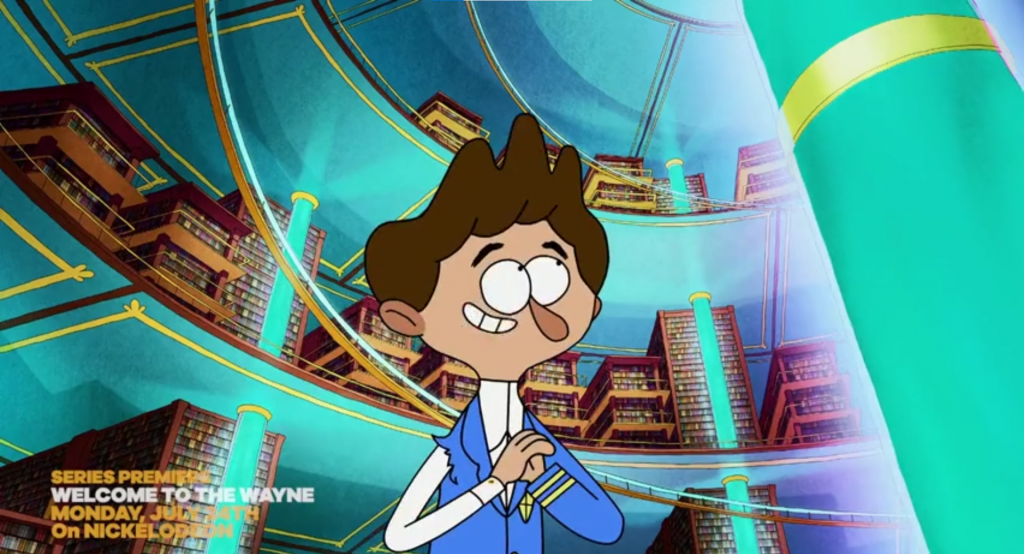
The second episode begins with the library. Ansi’s new friend, Julia Wilds, travels with Saraline and her brother, Olly, to the library, as they continue to try to unravel the mysteries of the Wayne. While Julia appears to be overwhelmed, Team Timbers (Saraline, Olly, and Ansi) are successful in fending off the mysterious masked man, Tony Stanza, keeper of the Stanza archives, who is trying to seize a card Ansi received from the library in the previous episode. Despite the fact he appears to be a villain, near the end of the episode, Tony surprisingly Olly and Saraline cards of their own, telling both of them, and Ansi, to return their cards before “time runs out.” This sets in motion the events of the next episode.
Eight episodes later, in episode 12, a new character, a vampire named Andrei, is informed that his book is overdue and that he must return it. He and Team Timbers follow a creature to the library that snatched his book. The episode that follows highlights the issues of underfunded libraries and the value of knowledge, even as they fight off a library ninja voiced by Charnele Crick. Clara sends the ninja to kill the vampire, because vampires attacked residents in the Wayne in the past, and drive Team Timbers out of the library. As the whole library mobilizes against Team Timbers, the ninja, who happens to be Clara’s granddaughter, is trapped between card catalogs. Andrei uses his superhuman strength and agility to save her. At one point, Olly jokes that the catalogs are attacking them because they are “angry about being replaced by the internet” as he continues to film everything for a viral video. The role of librarians as gatekeepers is emphasized when Clara warns Team Timbers that if they leave with Andrei, they can never return. Ansi, who loves the library, accepts this, even as he later laments his inability to access the library as a result.

A few episodes after this, the library ninja helps Team Timbers and introduces herself as Goodness, officially becoming part of the team defending the Wayne from evil forces. In the show’s 19th episode, Goodness and Saraline break into the library, catching a creature that looks like a running nose and spot Clara shelving books. In the season one finale, Clara offers her help to the eight-person team of protagonists, which has expanded beyond the original members of Team Timbers to form what is known as the Gyre.
In the show’s second and final season, Saraline describes the library as one of the quietest places in the Wayne in one episode; this library is also where her friend Annacile/the Arcsine goes to find out who has received her magical powers. A few episodes later, the show emphasizes the importance of the library as a quiet place for contemplation and study. Katherine Alice travels with Goodness to the library, with Clara shushing Goodness, telling her to use her “Stanza voice.” While this corresponds with the shushing librarian stereotype, Clara makes up for this by showing them the Wayne Cyclodex, a book that records “everything that has ever happened” in the Wayne. This book becomes central in the episodes that follow, her words becoming a warning to those in the Gyre. In the penultimate episode of the series, the characters briefly return to the library, which is described as a place where time stands still, before they enter a trap set by the show’s villains. While the characters do not travel to the library in the final episode, Clara is briefly possessed by rainbow gas and is shown, in the ending montage of the episode, doing exercises on the balcony of her room in the Wayne.
Although the series ran from 2017 to 2019 and likely will not return in the future, all 30 episodes can be purchased online. This short-lived but memorable series makes clear the value of libraries and librarians to society, as places of knowledge and diversity, more than most animated series.
Subscribe to the I Love Libraries newsletter for more great library stories.



